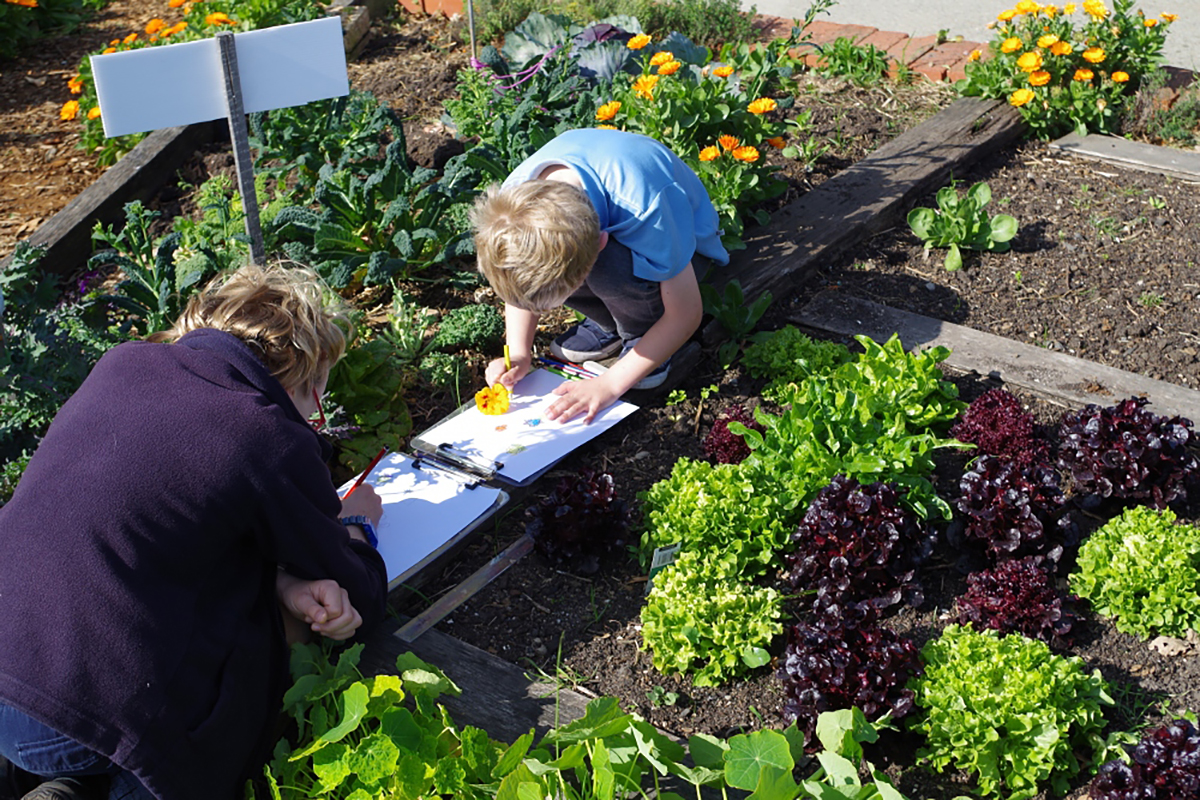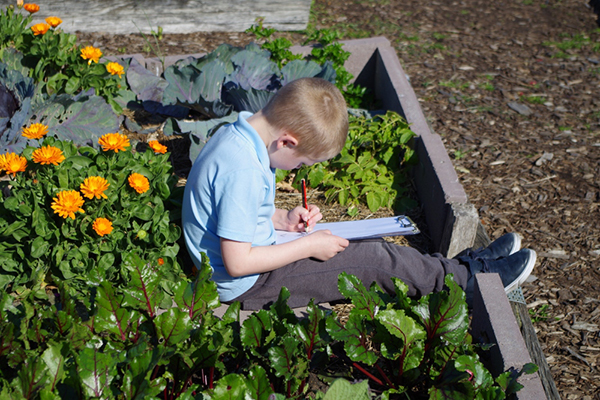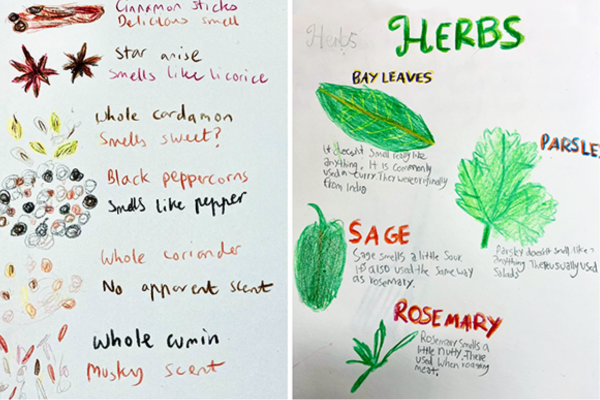Rejuvenate and flourish

The month of October is celebrated by southern-hemisphere cooks and gardeners alike – with good reason. The warm weather and dousing rains bring hibernating vegetable patches back to life and hardy root crops make way for leafy greens and fresh fruits. This time of year also calls for a moment to pause, reflect and plan before the busy end-of-year holiday months pass by in a blur of festive tidings.
Close your eyes and picture yourself standing in your kitchen garden under the warm spring sunshine. What can you see? Are there crops that exceeded your expectations this year? Were there any initiatives that didn’t quite work out? Was there anything you just didn’t have time for? In just a few short months, 2024 will be upon us – what is your vision for the kitchen garden next year?
Now is the ideal time to figure that out. Lets explore the ‘calm before the storm’ that resides in spring and how we can use this period to plan our program for the new year to bring even our boldest ambitions to life.

This image and header: Botanical drawing at Moonah Primary School.
Less chaos, more calm
Gardening has long been recognised as a sanctuary from the stresses of life and there is plenty of science to back that up. Therapy treatments centred around horticulture are used to treat stress and depression in settings ranging from schools to hospitals. There are even ways to reap the benefits of a vegetable garden without necessarily having to get your hands dirty.
For example, Collingwood College recently practiced our Botanical Drawings activity and explored the sensory properties of herbs and spices growing in their garden and stored in their pantry. Before photography, botanical drawings were used to capture the detail of plants from around the world. Also known as scientific illustrations, they are still used to capture the fine details of leaves, flowers, fruit and seeds of plants, from the very smallest lichen to the largest tree.

This image: Spice and herb observations at Collingwood College.
We spoke to Desley, long-term Kitchen Garden Coordinator at Collingwood College, to learn more about her students’ experience with the Botanical Drawing activity and how these kinds of activities can feed into the wider curriculum.
How did the participating students find the activity – what aspect of it did they like the most?
“The Botanical Drawing activity occurs at least 1-2 times during the school year. Students all enjoy the time to sit, study and draw. I focus on effort and practicing skills in observation and realistic documentation using the correct colours, forms and tones. I set up the resources at our kitchen tables and students use their Kitchen Garden Program books to document the drawings. After the activity is complete, the following kitchen and garden lesson links back to the knowledge and understanding gained by this activity. This encourages the development and use of a more nuanced sensory vocabulary.”
How can the skills practiced in this activity be applied to other aspects of the school curriculum?
“This activity can be extended by using the Botanical Drawings as a reference when designing and making botanical identification signs to go in the garden (Design & Technology – Grade 6 Activity). The drawings can also be referred to when producing glazed tiles, flags or aprons in Art class. There is also potential crossover with Science and Indigenous Studies, with a particular focus on the plants.”
Botanical Drawing encourages students to look closely at plants and examine their parts to discover what makes them unique. It’s a great activity for a day when it isn’t possible to work outside in the garden, and it ties into the Kitchen Garden Program’s Pleasurable Food Education Philosophy. Pleasurable food education is an approach to learning about food that empowers children and young people to develop an appreciation of seasonal produce, practical skills, and a positive, confident, and healthy relationship with food – for life. For more information, you can read this news story and Kitchen Garden Program members can access this post on the Shared Table which includes a downloadable classroom poster and handy explainer.
You can access our Botanical Drawing activity sheet via the Shared Table here. Similar self-directed activities for use in busy times and to empower independent student learning can be found here.

This image: Flourishing garden at Corowa Public School.
Kitchen garden vision statement
Think back to what you envisioned when picturing your kitchen garden program in 2024 – what sprung to mind? Now is the time to begin planning your summer garden and beyond. Consider the previous year and take note of what worked – and what didn’t. Think back to how the garden ebbed and flowed with the school year and the challenges you might have faced. What would you do differently next year? And how can you begin to dream big?
One way to consolidate your reflection can be through writing a Vision Statement and publishing it on the Shared Table. St Arnaud Primary School in Victoria did so earlier this year, outlining the purpose of the Kitchen Garden Program, how it’s integrated into the curriculum and introducing the team responsible for leading the charge.
Kirri, Kitchen Garden Coordinator at St Arnaud, wrote the Vision Statement in collaboration with fellow Coordinator Alana. We spoke to Kirri about how their vision has progressed since it was published and what recommendations they would have for other educators interested in preparing a vision statement of their own.
How has your vision come to life since it was published? What have been the successes and challenges so far?
“We have found that since nominating two of our amazing ES staff members as Kitchen Garden Coordinators, our program is running much smoother. I was initially driving this on my own while teaching a class full time, which was a lot to do on top of all the other roles and responsibilities I have at our school. A fortnightly menu is prepared for classes by our Kitchen Garden Coordinators Alana and Kelly. Any classes with allergies or intolerances can make adjustments where needed and our P-2 classes can choose 2-3 recipes from the menu. This is working well and has helped with the purchasing of consumable items such as flour and rice to keep the running costs of the program down. We are working towards ensuring we have seasonal produce planted and ready to use in cooking sessions as well.
Last term our 3/4 class had an integrated focus on festivals for their geography unit and their menus were planned around foods cooked for things like the Diwali festival. This term some of our students are baking bread as part of their Chemical Sciences investigations. We look for opportunities to integrate the Kitchen Garden Program into our classrooms as much as possible.
Do you have any advice for other educators preparing their own visions for the new year?
“My advice is to start small. Our initial vision was likely too big. We had a big idea of what we wanted the Kitchen Garden Program to look like at our school and we bit off large chunks at a time when we should have been focusing on small crumbs! This year we have focused on going back over some parts of the program, and looking at how we can improve so that it fits in with ‘The StAPS Way’ of teaching and learning.”
Below is an excerpt from the school’s Vision Statement, to help get an idea of structure and inclusions.
“At St Arnaud Primary School we are well into establishing food producing gardens and have a small kitchen facility to support the implementation of the Kitchen Garden Program at our school. The purpose of the Stephanie Alexander Kitchen Garden Program at StAPS is to introduce pleasurable food education to children during their primary years, in order to form positive food habits for life. Pleasurable food education is ripe with learning possibilities. In the kitchen and in the garden our students are discovering ideas and concepts first-hand, through real-life contexts and experiences. The Kitchen Garden Program is integrated into the curriculum with opportunities for literacy, numeracy, science and history learning too. Our wonderful Kitchen Garden team leaders Kelly and Alana are both passionate and valuable Educational Support staff who plan and organise our menus around seasonal produce, current integrated topics and the needs of each class.”
Read their Vision Statement in full on the Shared Table here.
This October, take the time to reset and reflect on your program’s progress so far. Step back from the never-ending to-do list of weeding and watering and find a moment of calm with one of our self-directed classroom activities. Once you’re feeling more grounded, reflect on the past year and plan all the exciting initiatives to come.
< Back to Latest News
